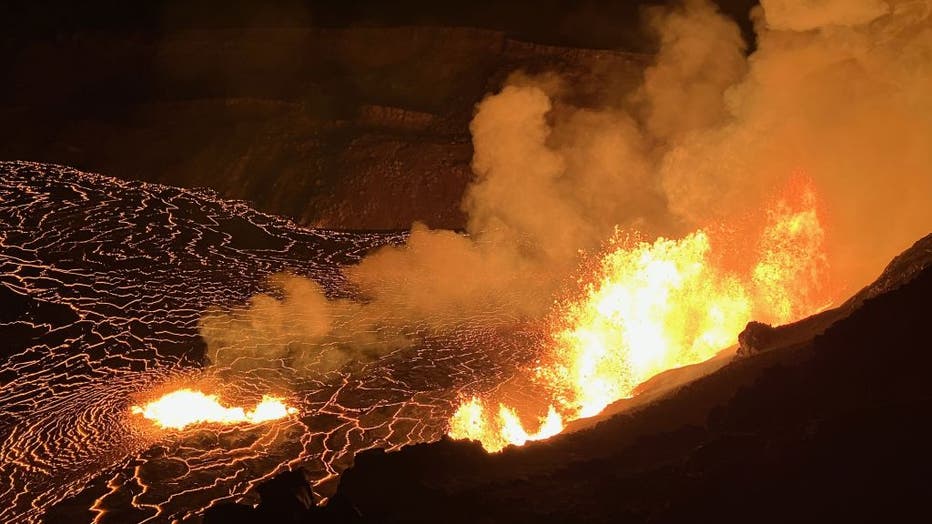Kilauea volcano eruption paused after spewing lava in Hawaii, USGS says
Timelapse captures Kilauea's spectacular lava fountains and flows
Hawaii’s Kilauea volcano erupted early Monday, December 23, prompting officials to issue a "watch" status volcano alert. (Credit: @USGSVolcanoes via Storyful)
HAWAII COUNTY, Hawaii - Kilauea volcano's eruption has significantly slowed and appears to be paused, according to the U.S. Geological Survey (USGS).
The eruption occurred about 2:20 a.m. local time Monday within Halemaʻumaʻu crater inside Kilauea's summit caldera, a closed area of Hawaii Volcanoes National Park.
There were no immediate threats to nearby residents or infrastructure, but volcanic gas emission rates were very high, the USGS said.
"It’s a pretty exciting time," USGS Hawaiian Volcano Observatory Scientist-in-Charge Ken Hon said Monday following the eruption.
Hon said the lava flow has covered several square kilometers of the old lava lake created from a December 2020 eruption. The lava fountains peaked at about 200 feet tall on Monday morning.
By Monday afternoon, the volcano started to calm down, as the ground stopped sinking and the shaking eased up. By 3:30 p.m., lava fountains disappeared, and 30 minutes later, the eruption had stopped completely. The amount of gas released also decreased significantly.

USGS Hawaiian Volcano Observatory geologists are documented the new eruption within Kalupele that started Monday morning from the closed area of Hawaii Volcanoes National Park on December 23, 2024 in Hawaii, United States. (Photo by N. Deligne/USGS/A
The last known eruption began on Sept. 15 in the middle East Rift Zone, covering 4 acres with lava. Following a brief pause, activity resumed at Nāpau Crater, continuing over the next few days and ultimately covering 156 acres. This marked a significant shift in volcanic activity at Kīlauea, the National Park Service (NPS) noted.
Kīlauea is the youngest and most active volcano on the island of Hawaiʻi and one of the busiest in the world. It has been erupting continuously since 1983.
In recorded history, Kīlauea has only had short periods of repose, according to the NPS. It has covered almost 90% of its surface in lava flows within the last 1,000 years. Some say that even the name Kīlauea translates to "spewing" or "much spreading."
The classic shield volcano with its gently sloping sides first emerged from the sea roughly 280,000 years ago. Its expansive surface covers an area slightly smaller than the island of Oʻahu.
Read more of this story from FOX Weather.

